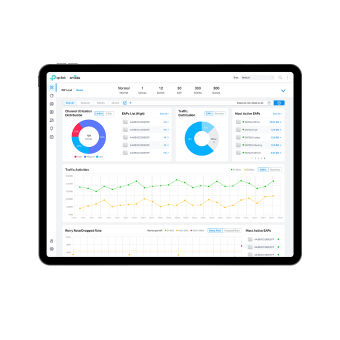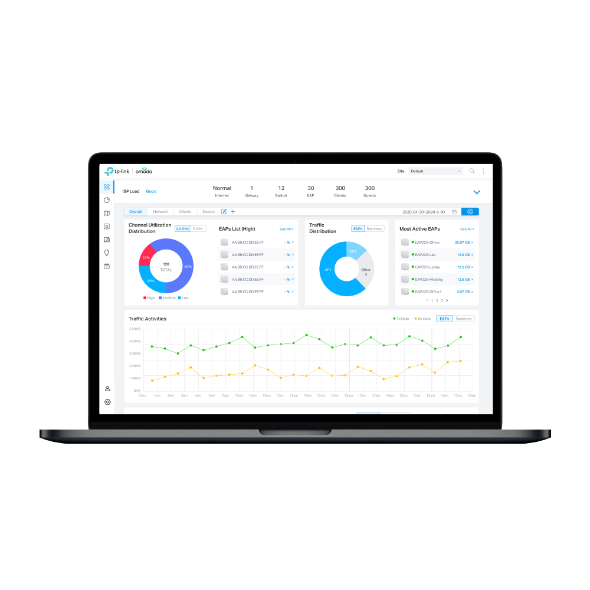如何在 Omada 控制器上設定帳號
這篇文章適用於:
內容
目標
本文介紹如何在 Omada 控制器上設定用戶和角色。
要求
- Omada 軟體控制器 (v5.8 以上) / 雲端控制器 / 硬體控制器
介紹
透過在 Omada 控制器上設定用戶和角色,您可以為不同帳號分配特定的存取和操作權限,從而提升控制器系統的安全性。
共有三種角色:主要管理員、管理員和觀看者。
- 主要管理員
主要管理員可以存取對應視圖中的所有功能。首次建立控制器的帳號將成為主要管理員。
- 管理員
管理員可以存取對應視圖中的大多數功能,但某些模組受到限制。例如,他們無權執行控制器遷移或自動數據備份,並且對授權管理和自定義帳戶角色僅具有查看權限。
- 觀看者
觀看者可以查看對應視圖中某些功能的狀態和設定。
您可以在 全域觀看> 帳號 > 角色 中查看每個角色的詳細權限。 共有四種權限級別:修改、僅查看、存取和阻擋。
- 修改:用戶可以存取指定模組的所有數據並使用其所有功能。
注意: 某些功能,如 MSP 模式、授權的自動啟用和續訂,僅能由主要管理員存取和使用。
- 僅查看:用戶對指定模組具有查看權限,無法使用任何功能。
- 存取:用戶可以存取並使用指定模組的某些功能。
- 阻擋:用戶被封鎖存取指定的頁面和功能。


注意: 為了幫助用戶成功登入到站點,即使全域儀表板頁面的權限設定為阻擋,仍然可以查看站點列表。
如果預設角色無法滿足您的需求,您可以建立一個角色並自定義其權限。
設定
步驟 1. 登入到 Omada 控制器,然後前往 全域觀看> 帳號 > 角色, 然後點擊 新增角色。 然後,輸入角色名稱並為不同的視圖設定權限。


步驟 2. 前往 全域觀看> 帳號 > 使用者名稱, 然後點擊新增使用者。 輸入用戶名和密碼,並選擇您建立的角色。 在 網站權限中, 設定用戶的網站權限以限制用戶可以存取的網站範圍。 預設情況下選擇了 所有站點,您可以根據需要手動選擇站點。輸入電子郵件和警報郵件 ,以接收產生的操作日誌和警報日誌。


結論
現在,您已建立了自定義角色的帳號,以限制用戶權限。
要了解每個功能和設定的更多詳情,請前往 下載中心 下載您產品的手冊。
這篇faq是否有用?
您的反饋將幫助我們改善網站










